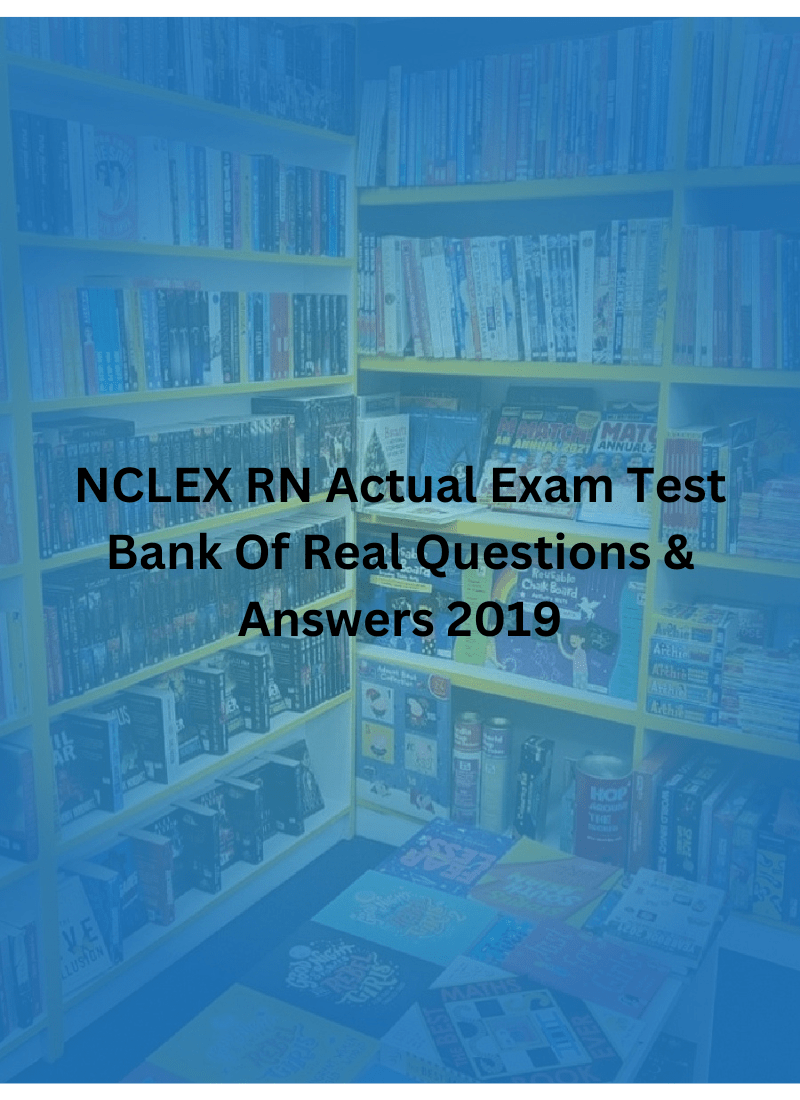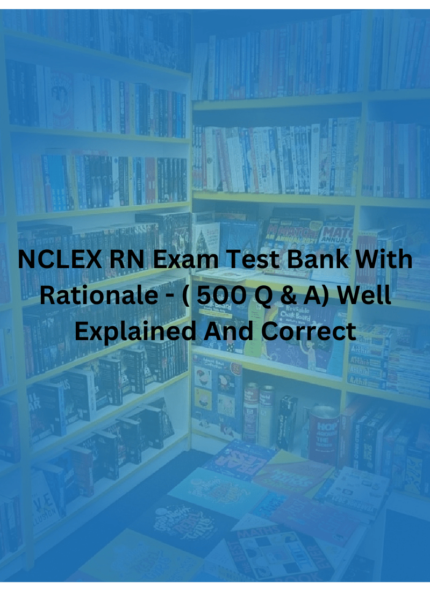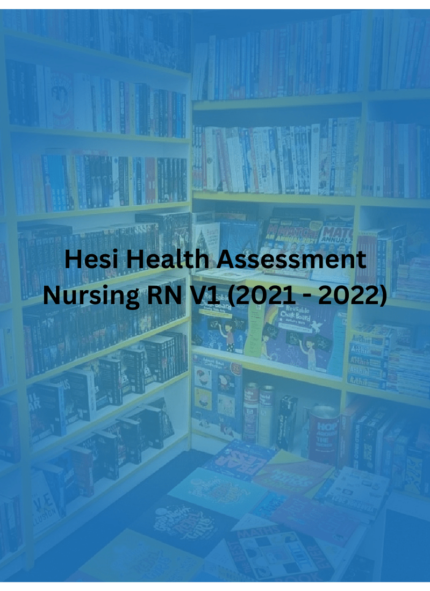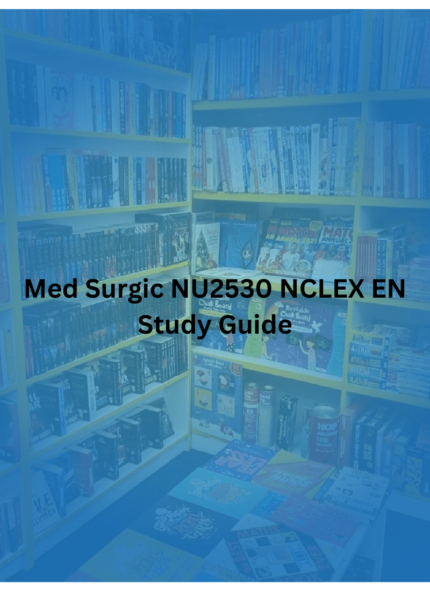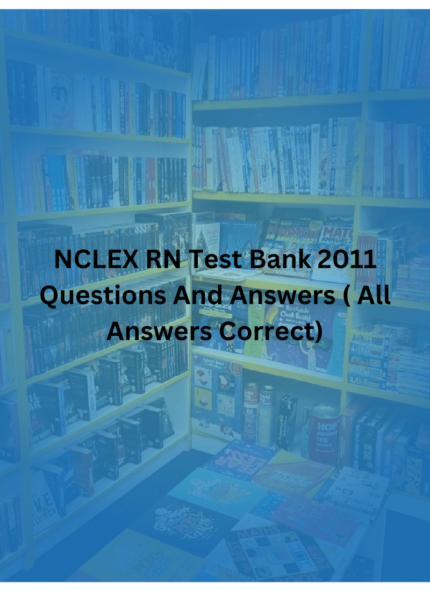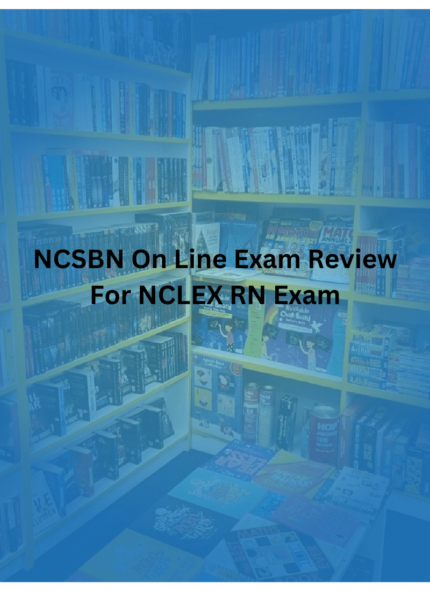NCLEX RN Actual Exam Test Bank Of Real Questions & Answers 2019
NCLEX NCLEX-RN
QUESTION 1
Which classification of drugs is contraindicated for the client with hypertrophic cardiomyopathy?
A. Positive inotropes B. Vasodilators
C. Diuretics
D. Antidysrhythmics
Answer: A
Explanation:
(A) Positive inotropic agents should not be administered owing to their action of increasing myocardial contractility. Increased ventricular contractility would increase outflow tract obstruction in the client with hypertrophic cardiomyopathy. (B) Vasodilators are not typically prescribed but are not contraindicated. (C) Diuretics are used with caution to avoid causing hypovolemia
A. (D) Antidysrhythmics are typically needed to treat both atrial and ventricular dysrhythmias.
QUESTION 2
Signs and symptoms of an allergy attack include which of the following?
A. Wheezing on inspiration B. Increased respiratory rate C. Circumoral cyanosis
D. Prolonged expiration
Answer: D
Explanation:
(A) Wheezing occurs during expiration when air movement is impaired because of constricted edematous bronchial lumen
A. (B) Respirations are difficult, but the rate is frequently normal. (C) The circumoral area is usually pale. Cyanosis is not an early sign of hypoxi
A. (D) Expiration is prolonged because the alveoli are greatly distended and air trapping occurs.
QUESTION 3
A client confides to the nurse that he tasted poison in his evening meal. This would be an example of what type of hallucination?
A. Auditory B. Gustatory C. Olfactory D. Visceral
Answer: B
Explanation:
(A) Auditory hallucinations involve sensory perceptions of hearing. (B) Gustatory hallucinations involve sensory perceptions of taste. (C) Olfactory hallucinations involve sensory perceptions of smell. (D) Visceral hallucinations involve sensory perceptions of sensation.
NCLEX NCLEX-RN
QUESTION 4
Which of the following findings would be abnormal in a postpartum woman?
A. Chills shortly after delivery
B. Pulse rate of 60 bpm in the morning on a first postdelivery day
C. Urinary output of 3000 mL on the second day after delivery
D. An oral temperature of 101F (38.3C) on the third day after delivery
Answer: D
Explanation:
(A) Frequently the mother experiences a shaking chill immediately after delivery, which is related to a nervous response or to vasomotor changes. If not followed by a fever, it is clinically innocuous. (B) The pulse rate during the immediate postpartum period may be low but presents no cause for alarm. The body attempts to adapt to the decreased pressures intra-abdominally as well as from the reduction of blood flow to the vascular bed.
(C) Urinary output increases during the early postpartum period (12–24 hours) owing to diuresis. The kidneys must eliminate an estimated 2000–3000 mL of extracellular fluid associated with a normal pregnancy. (D) A temperature of 100.4F (38C) may occur after delivery as a result of exertion and dehydration of labor. However, any temperature greater than 100.4F needs further investigation to identify any infectious process.
QUESTION 5
A six-month-old infant has been admitted to the emergency room with febrile seizures. In the teaching of the parents, the nurse states that:
A. Sustained temperature elevation over 103F is generally related to febrile seizures
B. Febrile seizures do not usually recur
C. There is little risk of neurological deficit and mental retardation as sequelae to febrile seizures D. Febrile seizures are associated with diseases of the central nervous system
Answer: C
Explanation:
(A) The temperature elevation related to febrile seizures generally exceeds 101F, and seizures occur during the temperature rise rather than after a prolonged elevation. (B) Febrile seizures may recur and are more likely to do so when the first seizure occurs in the 1st year of life. (C) There is little risk of neurological deficit, mental retardation, or altered behavior secondary to febrile seizures. (D) Febrile seizures are associated with the disease of the central nervous system.
QUESTION 6
A client diagnosed with the bipolar disorder continues to be hyperactive and to lose weight. Which of the following nutritional interventions would be most therapeutic for him at this time?
A. Small, frequent feedings of foods that can be carried
B. Tube feedings with nutritional supplements
C. Allowing him to eat when and what he wants
D. Giving him a quiet place where he can sit down to eat meals
Answer: A
Explanation:
(A) The manic client is unable to sit still long enough to eat an adequate meal. Small, frequent feedings with
NCLEX NCLEX-RN
finger foods allow him to eat during periods of activity. (B) This type of therapy should be implemented when other methods have been exhausted. (C) The manic client should not be in control of his treatment plan. This type of client may forget to eat. (D) The manic client is unable to sit down to eat full meals.

